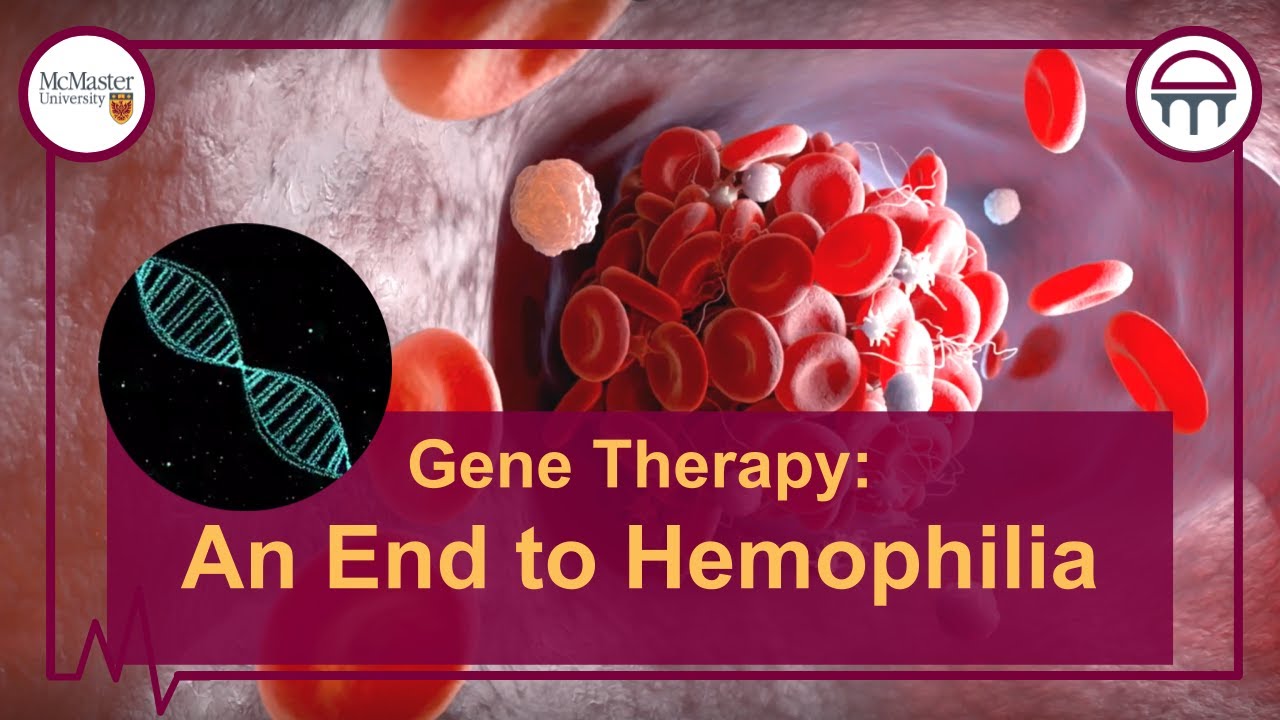Hemophilia (Year of the Zebra)
Summary
TLDRHemophilia is a genetic bleeding disorder affecting the blood's ability to clot due to deficiencies in clotting factors. The coagulation cascade, involving both intrinsic and extrinsic pathways, is impaired, leading to prolonged bleeding. Hemophilia A and B are caused by mutations in the genes for factors VIII and IX, respectively. Treatment involves clotting factor replacement, but complications like inhibitors can arise. Diagnosis is through lab tests, and individuals with hemophilia should avoid activities that increase bleeding risk.
Takeaways
- 🩸 Hemophilia is a genetic disorder characterized by impaired blood clotting, often due to a deficiency in clotting factors.
- 🛑 Hemostasis is the process that stops bleeding, and in hemophilia, this process is compromised, leading to prolonged bleeding.
- 🧬 The coagulation cascade involves a series of clotting factors that, when activated, form a clot to stop bleeding.
- 🔪 Primary hemostasis involves platelet plug formation at the site of injury, which is often normal in hemophiliacs.
- 🧬 Secondary hemostasis involves the coagulation cascade and is where deficiencies in clotting factors lead to hemophilia.
- 🌐 Hemophilia can be caused by deficiencies in various clotting factors, but most commonly factors VIII (Hemophilia A) and IX (Hemophilia B).
- 🧬 Hemophilia A and B are X-linked recessive disorders, predominantly affecting males due to their single X chromosome.
- 🏥 Diagnosis of hemophilia involves lab tests such as platelet count, Prothrombin time, and partial thromboplastin time, which are often abnormal in hemophiliacs.
- 💉 Treatment typically involves injections of the deficient clotting factor, but can be complicated by the development of inhibitors.
- 🚫 Individuals with hemophilia are advised to avoid activities and medications that increase the risk of bleeding.
- 🧬 Other causes of hemophilia-like symptoms include liver failure, vitamin K deficiency, autoimmunity against clotting factors, and disseminated intravascular coagulation.
Q & A
What is the meaning behind the term 'hemophilia'?
-The term 'hemophilia' is derived from Greek words for 'blood' and 'love,' which metaphorically suggests that people with the condition have a hard time stopping bleeding.
What is the normal process called when the body stops bleeding after an injury?
-The normal process is called 'hemostasis,' which involves immediate vasoconstriction, platelet plug formation known as primary hemostasis, and the activation of the coagulation cascade leading to secondary hemostasis and clot formation.
What are the clotting factors and where are they usually synthesized?
-Clotting factors are a set of proteins in the blood, most of which are synthesized by the liver and are usually inactive until activated during the coagulation process.
How does the coagulation cascade work in terms of amplification?
-The coagulation cascade works through a series of proteolytic cleavages that activate clotting factors in sequence, which has a huge degree of amplification and forms a clot within minutes of injury.
What is the final step in the coagulation process that leads to clot formation?
-The final step is the activation of the protein fibrinogen to fibrin, which polymerizes to form a mesh that reinforces the platelet plug and results in a hard clot at the injury site.
What is the difference between primary and secondary hemostasis?
-Primary hemostasis involves the formation of a platelet plug, while secondary hemostasis involves the coagulation cascade and the formation of a stable fibrin clot.
How does hemophilia affect the coagulation cascade?
-In hemophilia, there is a decrease in the amount or function of one or more clotting factors, which makes secondary hemostasis less effective and allows more bleeding to occur.
What are the two pathways that can initiate the coagulation cascade?
-The two pathways are the extrinsic pathway, which starts with tissue factor exposure, and the intrinsic pathway, which starts with platelet activation near blood vessel injury.
What are the most common types of hemophilia and the clotting factors they affect?
-The most common types are Hemophilia A, which affects factor 8, and Hemophilia B, which affects factor 9.
How are Hemophilia A and B inherited and what chromosomes are the responsible genes located on?
-Both Hemophilia A and B are X-linked recessive conditions, meaning they are inherited on the X chromosome and usually affect men, who have only one X chromosome.
What are some of the complications that can arise from hemophilia?
-Complications of hemophilia can include easy bruising, hematomas, prolonged bleeding after injuries or surgeries, gastrointestinal bleeding, severe nosebleeds, and dangerous bleeding into joints or the brain.
What are the typical diagnostic tests for Hemophilia A and B?
-Diagnosis usually starts with lab tests including a platelet count, Prothrombin time (PT), and partial thromboplastin time (PTT), followed by specific factor activity tests and mutation testing of the clotting factor genes.
How is hemophilia typically treated and what challenges can arise with treatment?
-Hemophilia is typically treated with injections of the missing or non-functional clotting factor. Challenges can include the development of inhibitors by the immune system, which can diminish treatment effectiveness and sometimes cause severe allergic reactions.
What is the role of desmopressin (DDAVP) in treating mild Hemophilia A?
-Desmopressin (DDAVP) is helpful for patients with mild Hemophilia A as it stimulates the release of Von Willebrand factor from endothelial cells, which promotes the stabilization of residual Factor 8.
What lifestyle recommendations are there for individuals with hemophilia?
-Individuals with hemophilia should avoid contact sports and medications that promote bleeding, such as aspirin.
Outlines

هذا القسم متوفر فقط للمشتركين. يرجى الترقية للوصول إلى هذه الميزة.
قم بالترقية الآنMindmap

هذا القسم متوفر فقط للمشتركين. يرجى الترقية للوصول إلى هذه الميزة.
قم بالترقية الآنKeywords

هذا القسم متوفر فقط للمشتركين. يرجى الترقية للوصول إلى هذه الميزة.
قم بالترقية الآنHighlights

هذا القسم متوفر فقط للمشتركين. يرجى الترقية للوصول إلى هذه الميزة.
قم بالترقية الآنTranscripts

هذا القسم متوفر فقط للمشتركين. يرجى الترقية للوصول إلى هذه الميزة.
قم بالترقية الآن5.0 / 5 (0 votes)






